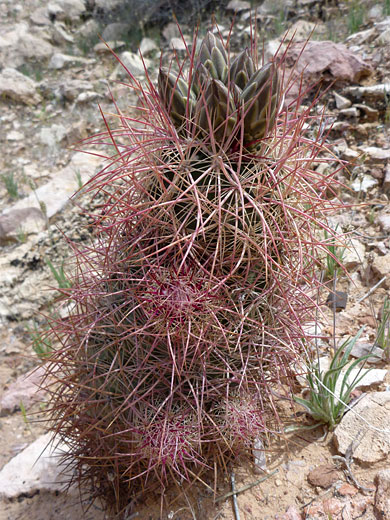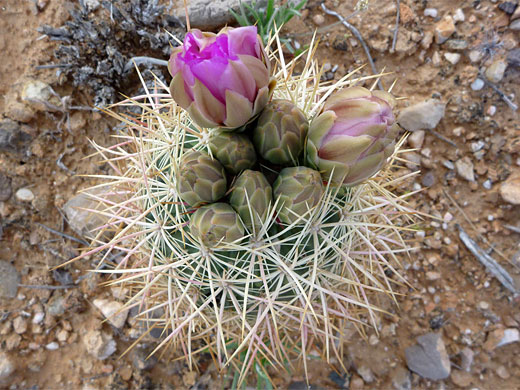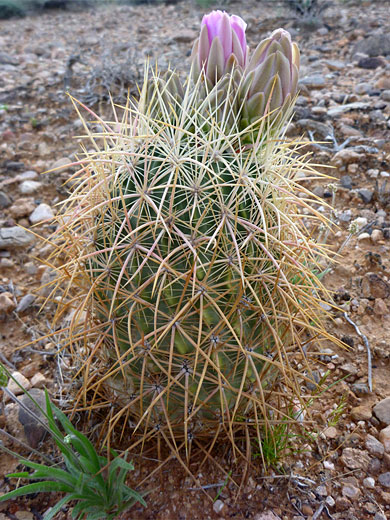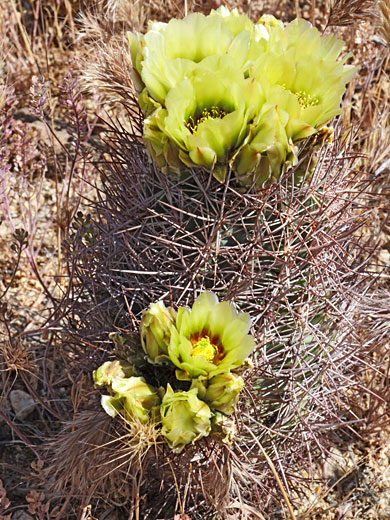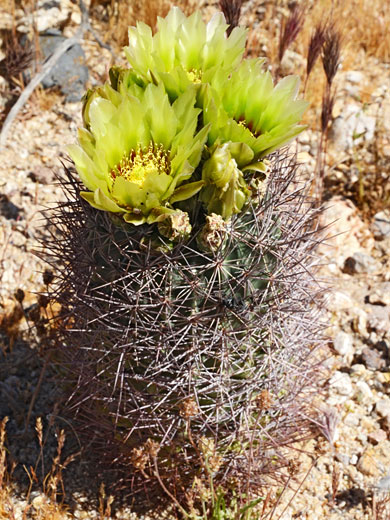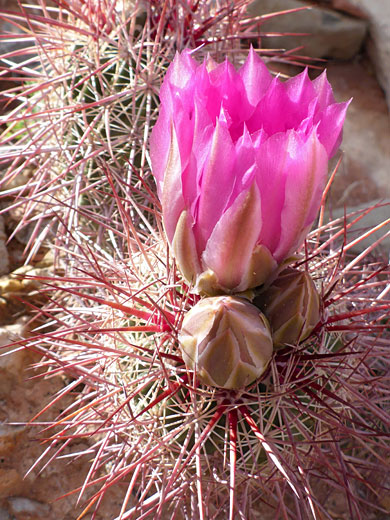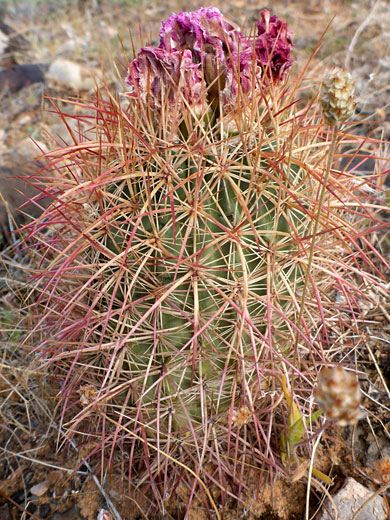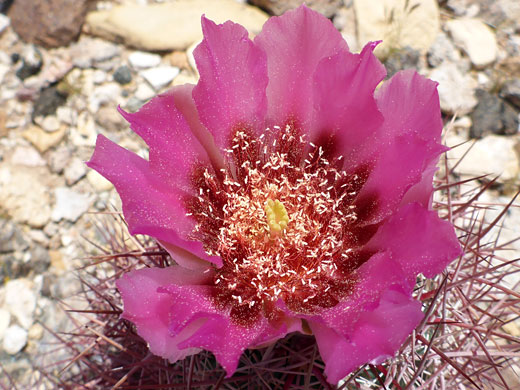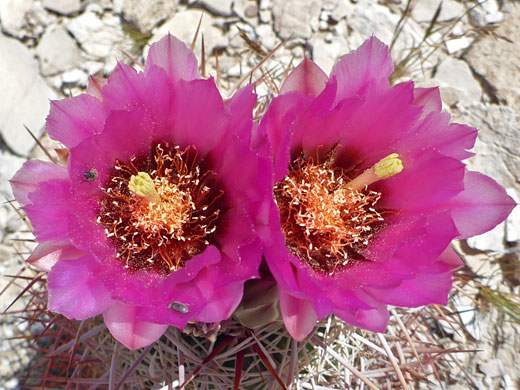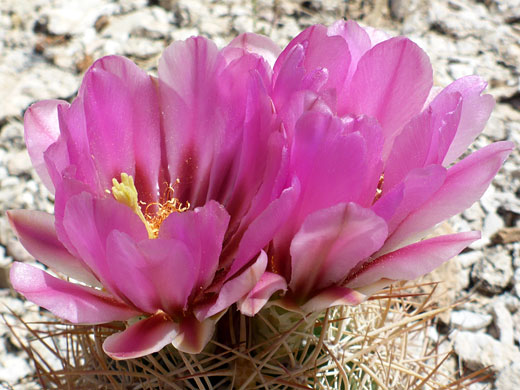Scientific name:
Echinomastus johnsonii
Common name:
Johnson's pineapple cactus
Range:
The Mojave Desert (CA, NV, UT, AZ)
Form:
Upright cylinder, 4 to 10 inches tall, sometimes with offsets
Habitat:
Desert plains, washes and slopes, up to 4,600 feet elevation
Flowers:
Magenta or (less often) yellow; growing right at the tip

Distribution map for echinomastus johnsonii
Spines of echinomastus johnsonii can be reddish, orange or grey in color and are arranged along vertical ribs (18 to 21) which spiral slightly up the plant. Ribs bear raised tubercles about one inch apart, between the spine clusters, which contain from four to nine central spines and nine or 16 radials. Radial spines are somewhat narrower and shorter, and straight; the central spines curve slightly.
Bright magenta flowers, up to 2.5 inches wide, are produced in spring (March to May). Stamens are yellow, the stigma lobes yellow to pale green. Western populations tend to have yellow flowers, and are sometimes considered to be a distinct variety (var lutescens). Tepals have flat or rounded tips, not pointed. The cylindrical stems reach a height of 10 inches and are usually single though may form offsets. This species is one of the largest of the pineapple cacti.
Echinomastus johnsonii is relatively rare, inhabiting scattered, generally remote, rocky slopes in the Mojave Desert, including the north end of Lake Mead, the hills enclosing Death Valley, and the Colorado River corridor in northwest Arizona and east California.
Bright magenta flowers, up to 2.5 inches wide, are produced in spring (March to May). Stamens are yellow, the stigma lobes yellow to pale green. Western populations tend to have yellow flowers, and are sometimes considered to be a distinct variety (var lutescens). Tepals have flat or rounded tips, not pointed. The cylindrical stems reach a height of 10 inches and are usually single though may form offsets. This species is one of the largest of the pineapple cacti.
Echinomastus johnsonii is relatively rare, inhabiting scattered, generally remote, rocky slopes in the Mojave Desert, including the north end of Lake Mead, the hills enclosing Death Valley, and the Colorado River corridor in northwest Arizona and east California.
All Contents © Copyright The American Southwest | Comments and Questions | Contribute | Affiliate Marketing Disclosure | Site Map



